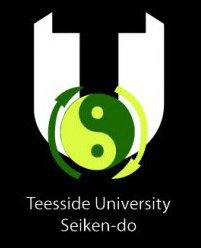
DEVELOPING FORM: The club demonstrating a T’ai Chi form in certain stages.
Chinese martial arts are unlike many forms that have come and gone.
Hundreds of Chinese martial arts have emerged from the shadows over time and the majority of them aren’t actually used for use of combat at all.
T’ai Chi is a physical AND mental martial art, focusing on developing ones health rather than martial arts skill.
For this reason, many practitioners use this as a method to get fit rather than to use in combat.
Despite this, T’ai Chi is still a form of fighting that can hold its own against any average Joe.
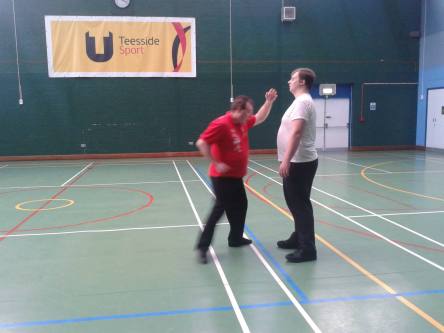
LEARNING: Instructor Stephen Brown teaching attacks to the group
CHINESE martial art T’ai Chi has found its way to Teesside University as way to help students feeling the pressure of their studies.
The Teesside University T’ai Chi society was formed as a way to ease the minds of students with its work on health of the body and mind.
Stephen Brown has been instructing for 4 years at the club and he couldn’t wait to take instruction.
Stephen said: “I was in one of the classes and I’d already been doing teaching when one of the teachers left.”
“And I said “Well I’ll keep it going and continue to teach it” to keep the club going.”
“I’ve been doing it for 4 years now and it has been a great experience.”

FOLLOW THE LEADER: Members attempting to follow the moves showcased by Intstructor Stephen
Stephen has been studying yang style T’ai Chi for more than 10 years and has been studying chen style T’ai Chi for 6 years.
It is the Chen style that is taught in the club, which Stephen has a lot of differences from the yang style.
Stephen said: “From the chen style stemmed some other styles like yang style.”
“Chen style is gaining preference becauseit has more of a balanced nature to it whereas yang is very soft and gentle.”
“The chen tends to be of equal hard and softness so it has both ying and yang aspects.”
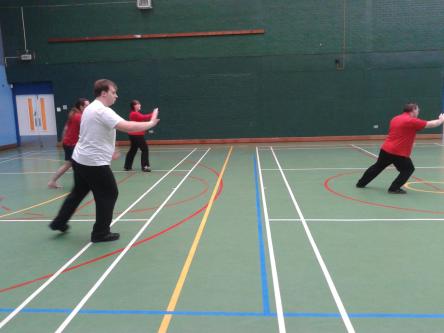
FLOW: Following the flow of the move with the instructor
Regardless of what style is taught, Tai-Chi is a style which really benefits those with an interesting in protecting themselves.
Stephen said: “T’ai chi helps with self-defence and when I say self-defence, the first thing in self-defence is the health of the body.”
“One can’t defend themselves if they can’t defend themselves against themselves.”
“It allows the user the ability to release one’s mind from the daily activities.”
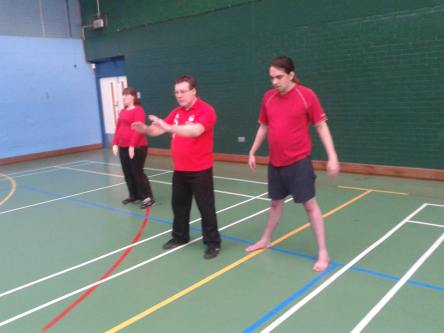
T’AI CHI MOVES: Stephen demonstrates a form for his students to follow
Stephen continued the group on after was graduating with qualifications in Visual and Web Applications.
Stephen believes it is an exercise that can help ease stress levels, especially for students.
Stephen said: “If you’re a student and you walk away from studies and come back with a fresher mind, you can always tackle something.
“Now that’s difficult to do, because how do you walk away from something well if you go and do something and you study something else?
“You’re not resting the mind, but if you do something that’s a study of movement like t’ai chi is, there’s no serious difficulty in moving the body in co-ordination with one’s will, but doing it precisely is relaxing but not tense.”
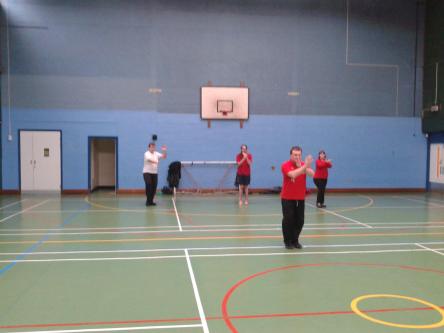
CLUB UNITED: Club showcases their skills as one.
Member and current student Sean Wilkinson encourages students to get involved in order to ease the heavily loaded student mind like it has for him.
Sean said: “I think you should give it ago, because it does help your mind and your body.”
“Not only is it a physical activity it’s a mental activity.”
“After hours of doing this, your mind is completely clear and it’s still a martial and is used for self-defence.
Sessions are usually on from 2:00pm to 4:00pm every Sunday in the Brittan Building, but this can be subject to change.
To find out more about the club e-mail them at taichi@tees-su.org.uk.






![20140116_203346[1]](https://courtsideteesside.wordpress.com/wp-content/uploads/2014/01/20140116_2033461.jpg?w=444)





